#venice in peril
Explore tagged Tumblr posts
Text
Rondò Veneziano - Sinfonia Per Un Addio (Premiatissima 1983)
youtube
#rondò veneziano#sinfonia per un addio#gian piero reverberi#trash baroque#la serenissima#venice in peril#1983#Youtube
2 notes
·
View notes
Text

Harvest and Trade Metropolises of the 14th Century 🍂🍁✨
A Melting Pot of Cultures and Hidden Romances
The 14th century was a time of transformation, as Europe flourished and became a hub of trade and cultural exchange. Cities like Venice, Genoa, and Florence evolved into powerful trade metropolises, as did northern cities such as Bruges, Lübeck, and Cologne, where merchants from all over the world gathered to exchange goods, knowledge, and stories. These bustling centers, especially during autumn markets that celebrated the harvest season, were filled with stalls showcasing exotic fabrics, precious spices, and rare treasures, creating a scene of constant activity and adventure.
Yet behind the commerce and economic hustle lay deeper, more human stories. Merchants from different regions and cultures met in these cities not only as business partners but as people who shared the joys and challenges of life. Their journeys were long and perilous, and arriving in a new city was often met with relief and a celebration of life. It’s easy to imagine that in these moments of pause and festivity, connections were formed that went beyond mere trade.
Michael Rocke's work "Forbidden Friendships: Homosexuality and Male Culture in Renaissance Florence" (1996) compellingly highlights how close friendships and connections between men developed in Florence and other trade cities. Rocke describes how the complex social structure of the Renaissance allowed men to maintain intimate and often emotional relationships that surpassed business interests. In some cases, these connections have been preserved in archives through letters and private records, suggesting that such relationships were sometimes romantic in nature. The intertwining of trade and personal life provided space for deeper bonds that may have been perceived as mere partnerships in public but held greater meaning in private.
These connections often remained in the shadows of official historical records, but with a closer look, the streets and parks of these cities tell stories of alliances that involved hearts as well as gold.
Text supported by GPT-4o, Claude 3.5 Sonnet Images generated with SDXL, overworked with SD-1.5/SDXL inpainting and composing.
#HistoricalRomance#RenaissanceLove#CulturalExchange#LGBTQHistory#MichaelRocke#gayart#autumnvibes#autumncolors#gayromance#manlovesman#ancienttraders
23 notes
·
View notes
Text
The Philosophy of Shakespeare
The philosophy of Shakespeare refers to the exploration of philosophical themes, questions, and ideas within the works of William Shakespeare. While Shakespeare was not a philosopher in the traditional sense, his plays and sonnets are rich with philosophical insights that address issues related to human nature, ethics, politics, love, fate, identity, and the human condition. Scholars and readers alike have long examined how Shakespeare’s writings engage with philosophical concepts and how these concepts are dramatized through his characters and narratives.
Key Themes in the Philosophy of Shakespeare:
Human Nature and the Human Condition:
Complexity of the Human Psyche: Shakespeare's characters are known for their psychological depth and complexity. His works explore the multifaceted nature of human beings, including the tensions between reason and emotion, ambition and morality, and appearance and reality.
The Tragic Flaw (Hamartia): Many of Shakespeare’s tragedies revolve around the concept of a tragic flaw, a characteristic that leads to the downfall of the protagonist. This theme raises philosophical questions about free will, fate, and the moral consequences of human actions.
Ethics and Morality:
Good and Evil: Shakespeare’s works frequently grapple with the nature of good and evil, exploring the moral ambiguities of his characters' actions. Plays like Macbeth and Othello delve into the corrupting influence of power, jealousy, and ambition.
Justice and Revenge: The tension between justice and revenge is a recurring theme, particularly in plays like Hamlet and The Merchant of Venice. These works examine the ethics of retribution, the consequences of revenge, and the pursuit of justice.
Fate and Free Will:
Destiny and Choice: Shakespeare often explores the tension between fate and free will, questioning the extent to which characters are in control of their own destinies. Romeo and Juliet and Macbeth are notable examples where the characters' actions seem predestined, yet their choices play a crucial role in their outcomes.
Prophecy and Foreknowledge: The use of prophecy, as seen in Macbeth and Julius Caesar, raises philosophical questions about whether knowledge of the future alters the course of events or if it leads inevitably to the fulfillment of that future.
Identity and Self-Knowledge:
The Fluidity of Identity: In plays like Twelfth Night and As You Like It, Shakespeare explores the fluidity of identity, particularly through themes of disguise and mistaken identity. These themes challenge the fixed nature of identity and raise questions about self-knowledge and authenticity.
Self-Deception: Characters in Shakespeare’s plays often engage in self-deception, either out of pride, fear, or desire. This theme is particularly prominent in King Lear and Hamlet, where characters’ inability to see themselves or their situations clearly leads to tragedy.
Politics and Power:
The Nature of Authority: Shakespeare’s historical plays and tragedies frequently address the nature of political power and authority. Richard III, Henry V, and Julius Caesar explore the ethics of leadership, the legitimacy of rulership, and the corrupting influence of power.
The Body Politic: The metaphor of the body politic, where the state is likened to a human body, is a recurring theme. In plays like Coriolanus and Measure for Measure, Shakespeare examines the health of the state and the moral responsibilities of rulers.
Love and Relationships:
Romantic Love: Shakespeare’s comedies and tragedies offer deep reflections on the nature of love, its joys, and its perils. Plays like Romeo and Juliet and Much Ado About Nothing explore the idealization of romantic love, the pain of unrequited love, and the complexities of human relationships.
Friendship and Loyalty: Beyond romantic love, Shakespeare also delves into themes of friendship and loyalty, as seen in The Merchant of Venice and Julius Caesar. These relationships often raise questions about the conflicts between personal loyalty and public duty.
Appearance vs. Reality:
Illusion and Truth: Many of Shakespeare’s plays involve themes of appearance versus reality, where characters and situations are not what they seem. Hamlet and Othello are prime examples of how deception and the search for truth drive the plot and philosophical inquiry.
Theatricality of Life: Shakespeare often blurs the line between reality and performance, as seen in As You Like It's famous "All the world's a stage" monologue. This raises philosophical questions about the nature of reality, the roles people play in life, and the construction of identity.
Mortality and the Meaning of Life:
Death and the Afterlife: Shakespeare’s works are deeply concerned with mortality, the fear of death, and the unknown aspects of the afterlife. Hamlet's "To be, or not to be" soliloquy is one of the most famous meditations on existence and the fear of what comes after death.
The Transience of Life: The fleeting nature of life and the inevitability of death are recurrent themes, particularly in Shakespeare’s sonnets and tragedies. These reflections often lead to a broader contemplation of the meaning and value of life.
Philosophical Skepticism:
Doubt and Certainty: Shakespeare’s characters often grapple with doubt and uncertainty, questioning their beliefs, their perceptions, and the world around them. This skepticism is evident in Hamlet's introspection and in King Lear's descent into madness.
Relativism and Perspective: Shakespeare frequently presents multiple perspectives within his plays, allowing for a relativistic view of truth and morality. This multiplicity of viewpoints invites the audience to question the nature of truth and the reliability of perception.
The philosophy of Shakespeare is not a unified doctrine but rather a rich and varied exploration of fundamental human concerns. Through his characters and narratives, Shakespeare engages with philosophical questions about human nature, morality, power, love, identity, and existence. His works continue to inspire philosophical inquiry, offering insights that are as relevant today as they were in the Elizabethan era.
#philosophy#epistemology#knowledge#learning#education#chatgpt#ethics#psychology#Shakespeare#Philosophy of Literature#Human Nature#Morality#Ethics#Fate and Free Will#Identity and Self-Knowledge#Politics and Power#Love and Relationships#Appearance vs. Reality#Mortality#Philosophical Skepticism#Tragic Flaw#Shakespearean Tragedy#Renaissance Philosophy
11 notes
·
View notes
Text

Solitude gives birth to the original in us, to beauty unfamiliar and perilous - to poetry. But also, it gives birth to the opposite: to the perverse, the illicit, the absurd.
// Thomas Mann, Death In Venice
#photography#ph#venice#venezia#italy#italia#travel#travel photography#thomas mann#death in venice#lit#q
226 notes
·
View notes
Text
These are the things I wrote for fest, wrote for fest, wrote for fest. These are the things I wrote for fest and now I'm feeling punchy.
After sunset, at the Syrian Embassy - table 3 - migrating birds
007 and the librarian table 4 - Q is not with MI:6.
games without frontiers table 4 - M is so done
concealer table 3 - fallen angel
the coffee shop in venice table 4 - Bond Girls
the perils of goat yoga table 3 - chalet
i love you as one loves certain obscure things - table 3 - lips
<a href=https://archiveofourown.org/works/57464965>old fashioned, extra cherries</a> table 4 - retired james bond
an elephantine explanation bond breaks q's equipment - gen
<a href=https://archiveofourown.org/works/57489703>i'm borrowing your bath, i don't want to hear another word about it</a> table 3 - bath time
relay station (stuck in the middle with q) - table 3 - lakeside flats
cattywampus - table 4 - james bond breaks in
dosing error - table 4 - drunk Q
gruesome fairy tale table 3 - knitting basket
your lover is in another castle table 3 free space
something's going around the office life at MI:6 - table 4
adventures of the patient resident City Park - table 3 finished fic
my little bird. table 4 blank space. Okay, this is a wingfic, but it retells Casino Royale. It's got Brosnan!Bond as Alec's dead mate and Craig !007 being minded by Alec after he recklessly blew up the embassy. So you've got partners, one vaguely suicidal but being kept back by moral obligations and the other just finding out about the fit-looking 006 with a death wish. It has everything. It has Vesper with wings and snarky Brosnan!Bond (who exists only in his partner's head) and brand new!Q and sympathetic Eve and Dench. And WINGS, everybody has those, don't forget.
And yes, I did a genderswap thing. I am going to finish that, too. But the wings thing grabbed my brainmeats and refuses to let them loose.
(and i know the html is screwy. i have tried to fix it. it dislikes me.)
7 notes
·
View notes
Text
Solitude gives birth to the original in us, to beauty unfamiliar and perilous - to poetry. But also, it gives birth to the opposite: to the perverse, the illicit, the absurd.
-Thomas Mann, Death in Venice and Other Tales
#poetry#poem#writer#books#books & libraries#books and literature#dark academia#literature#quotes#artist#rumi love quotes#rumipoetry#rumi#rumiquotes#sylvia plath#mary oliver#margaret atwood#virginia woolf#kafka quotes#kafkaposting#franz kafka#book excerpt#book quotes#movie quotes#literature quotes#poetry quotes#love poems#love quote#love poetry#love poem
114 notes
·
View notes
Text

Solitude gives birth to the original in us, to beauty unfamiliar and perilous - to poetry. But also, it gives birth to the opposite: to the perverse, the illicit, the absurd.
-- Thomas Mann, Death in Venice and Other Tales
(Bucharest, Romania)
#solitude#poetry#danger#distance#thomas mann#death in venice#travel photography#bucharest#romania#quote
147 notes
·
View notes
Text
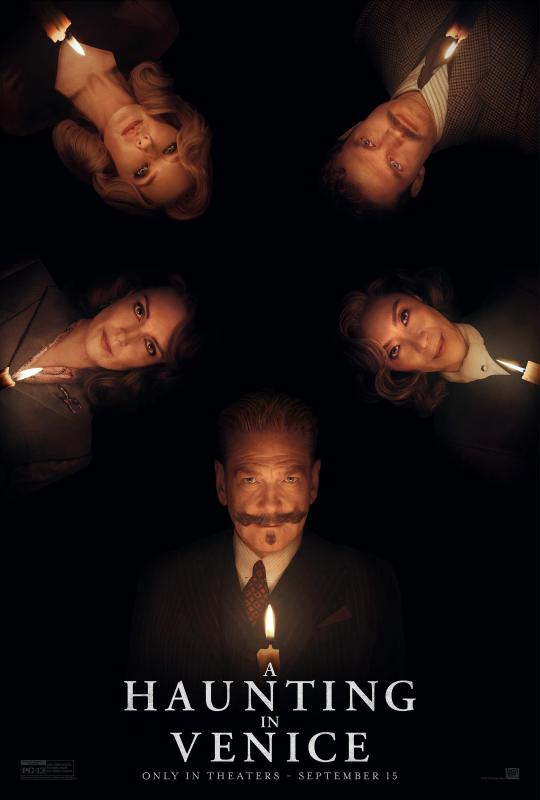
A Haunting in Venice (2023)
This is a Movie Health Community evaluation. It is intended to inform people of potential health hazards in movies and does not reflect the quality of the film itself. The information presented here has not been reviewed by any medical professionals.
A Haunting in Venice has several sudden, dramatic strikes of lightning that create severe but brief strobe effects. These can be hard to predict. Several scenes are lit by flickering fire, which may cause a strobe effect in some shots. There are sudden flashbacks that are much brighter than the previous shot.
The camera spins for about 20 seconds at a high speed in one scene. A sequence of high anxiety involves a type of camera work that includes some shaking. There are scenes of peril at extreme heights.
Flashing Lights: 8/10. Motion Sickness: 5/10.
TRIGGER WARNING: Multiple people are suspected of having acted on suicidal ideation, with one case being true. One of the more disturbing real-life behaviors shown in The Sixth Sense is depicted briefly in this film.
Image ID: A promotional poster for A Haunting in Venice
youtube
#Movie Health Community#Health Warning#Actually Epileptic#Photosensitive Epilepsy#Seizures#Migraines#Motion Sickness#20th Century Studios#A Haunting in Venice#September#2023#Kyle Allen#Camille Cottin#Jamie Dornan#Jude Hill#Ali Khan#Emma Laird#Kelly Reilly#Riccardo Scamarcio#Michelle Yeoh#Kenneth Branagh#Rated PG-13#Youtube
14 notes
·
View notes
Text
Solitude gives birth to the original in us, to beauty unfamiliar and perilous -- to poetry. But also, it gives birth to the opposite: to the perverse, the illicit, the absurd.
-- Thomas Mann, Death in Venice
17 notes
·
View notes
Text

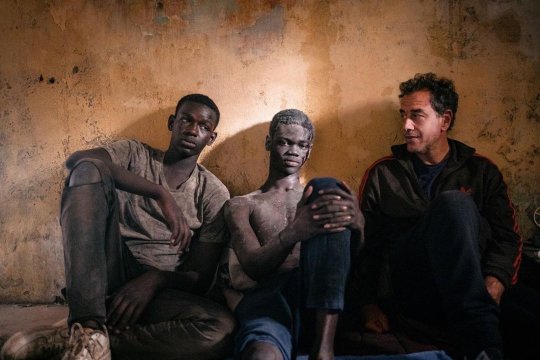

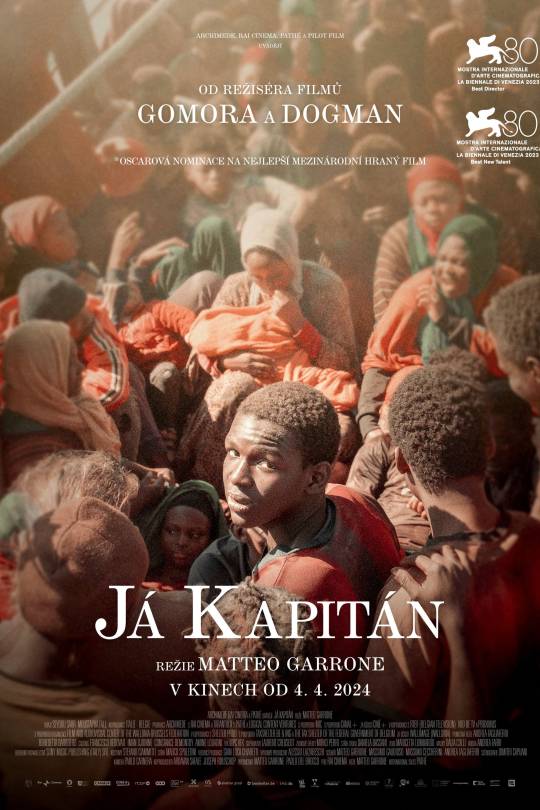
Io Capitano | dir. Matteo Garrone, 2023.
Seydou, a teenage boy, together with his cousin Moussa, decides to leave Dakar in Senegal and make his way to Europe. A contemporary Odyssey through the dangers of the desert, the horrors of the detention centers in Libya and the perils of the sea.
I was deeply moved by the immense courage and humanity, the cinematography and costumes. Outstanding.
"Over the last 15 years, 27,000 people have died trying to make the journey that I show in the movie. We wanted to give a visual form to a part of the journey we don't see… I was honestly very worried about this movie, and it took eight years to decide to make it. I was worried about the risk of speculating too much and exploiting these poor migrants by making their journey about, and from, my point of view."
- Garrone.
"The first thing apparent to anyone who meets Matteo Garrone is his intrinsic kindness. When asked if the story is inspired by real events, Garrone answers, “yes of course, have you met Mamadou?” referring to Mamadou Kouassi Pli Adama, who is listed as one of the “collaborating writers” on Io Capitano, and has joined Garrone, actors Sarr and Moustapha Fall in Marrakech. “He’s one of the three guys who inspired the movie with his life and his experience,” Garrone explains, continuing “every frame of the movie is connected with some real story, of someone who really lived that experience. Behind these numbers are human beings,” Garrone continues, “human beings who are exactly like us, with the same desires — to move, to look for a better life, to discover the world.” Like looking in a mirror really. Only that mirror holds up the similarity of the power of humanity, not the reflection of our different skin tones. And what that entails, as far as privilege.
- E Nina Rothe
Io Capitano premiered at the 80th Venice Film Festival, where Garrone was awarded the Silver Lion for Best Director and Sarr won the Marcello Mastroianni Award for Best Young Actor. Now, the film is nominated for Best International Feature Film at the 96th Oscars, which Garrone tells A.frame has made him "incredibly proud." | AFrame Article
Images:
The New Yorker
E NINA ROTHE
Kang diego | kang_junior64
EdisonFilmHub
3 notes
·
View notes
Text

1 March 1971 Daily Mail: Princess Anne shows off her new Elizabethan hair style - which is similar to that worn by Glenda Jackson - BBC's Elizabeth the First - at premiere of 'Death in Venice'. Princess Anne wore a right royal hairstyle at last night's premiere of Death in Venice. It looked remarkably like the style worn by actress Glenda Jackson in last week's episode of Elizabeth R. Buckingham Palace said: 'Like everybody else of her age, the Princess likes to change her hairstyle from time to time.' The Queen also attended the premiere in aid of the Venice in Peril Fund.
21 notes
·
View notes
Text
I woke to our first full day in Trieste with a sore throat and foggy head. Aside from the discomfit, the thing I found most galling was the SHEER INJUSTICE of it. Before the pandemic, I would have accepted the misfortune better - these things happen. Post Covid, it feels personal. Who was out and about spreading germs when they should have been at home? Was it the young student who sat next to me on the train from the Malpensa International Airport to the Stazione di Milano Centrale blowing her nose loudly at regular intervals? Was it the glamorous young woman originally from the Ukraine, who sat next to me on the journey from Venice to Trieste, sniffing all the way? My Covid test was negative. That was the main thing. So I tried to get over myself, forge ahead with our exploration of Trieste, keep the Paracetomolo up and keep my germs to myself!
Inspired by an episode of Monty Don swanning around the Parco del Castello di Miramare, we caught a bus out of Trieste central to see this 19th Century castle and its 22 acres of parkland for ourselves. The Austrian Archduke Ferdinand Maximilian and his wife Charlotte of Belgium for whom it was built loved a good garden, especially a formally landscaped one with unusual specimens, unexpected paths to stunning views and water features of girls embracing swans (which was very fashionable in its day). It was always going to be a private garden of wonders but Ferdinand’s civic-mindedness got the better of him and he opened it to the public several days a week.
Ferdinand got off to a flying start, being appointed Commander in Chief of the Imperial Navy in his early to mid 20s, but it all came crushing down around 10 years later when he was executed in Mexico. It is a long story but he had been installed by then as Emperor of Mexico by the ruling classes who then turned on him when he proved to be too progressive. Charlotte’s story is longer and sadder. She could feel the peril they were in and undertook some desperate and ultimately unsuccessful diplomatic missions to shore up support from the French and the Vatican. Her mental health was said to have deteriorated rapidly after that and others took control of her public and domestic life until she died at the age of 86.
I have been reading about all the things you can do in a day in Trieste and have put together a pretty good list on the strength of them, but I wonder how even these hyper efficient tourists can achieve so much. Their excursions must not be punctuated by impromptu stops for espresso, biscotti and Aperol spritzes like ours. They must not walk by cafe after cafe wondering where to have lunch and they must spend no time at all looking for bus stops and umbrellas. Alas there must be no time in their busy schedule for the ubiquitous afternoon nap. We managed one thing today and were glad of it.
8 notes
·
View notes
Text

@fallowhearth
Hmm, probably? Depends on what about WB's stuff you really like, but would definitely say give it a try. (It's only 22 chapters in so far anyway, so that's only like a normal sized novel investment, right? :P )
It's not really any more high concept than Twig or Pact, but it's full secondary world and the setting's a mix of intentionally very alien conceits and just obvious counterpart cultures, which I know some people find annoying - very clear that the big city at the start is Fantasy Venice, that these republics are Fantasy Chinese and this empire is Fantasy Aztecs, etc, despite the conditions they've developed in being unrecognizable to any historical analogue - well, here's the actual pitch on the site.
Vesper is a world built on the ruins of older ones: in the dark of that colossal cavern no one has ever known the edges of, empires rise and fall like flickering candles.
Civilization huddles around pits of the light that falls through the cracks in firmament, known by men as the Glare. It is the unblinking stare of the never-setting sun that destroyed the Old World, the cruel mortar that allows survival far below. Few venture beyond its cast, for in the monstrous and primordial darkness of the Gloam old gods and devils prowl as men made into darklings worship hateful powers. So it has been for millennia, from the fabled reign of the Antediluvians to these modern nights of blackpowder and sail. And now the times are changing again.
The fragile peace that emerged after the last of the Succession Wars is falling apart, the great powers squabbling over trade and colonies. Conspiracies bloom behind every throne, gods of the Old Night offer wicked pacts to those who would tear down the order things and of all Vesper only the Watch has seen the signs of the madness to come. God-killers whose duty is to enforce the peace between men and monsters, the Watch would hunt the shadows. Yet its captain-generals know the strength of their companies has waned, and to meet the coming doom measures will have to be taken.
It will begin with Scholomance, the ancient school of the order opened again for the first time in over a century, and the students who will walk its halls.
Book I: Lost Things
Tristan Abrascal is a thief, one of many making their living under the perpetual twilight of the greatest city in all of Vesper: Sacromonte. Quick wit and a contract with a capricious goddess have always kept him one step ahead, until one night he crosses a line by accident that burns all the bridges he had left. But not all is lost, for his mentor offers a way out of peril that turns out to be more than a simple escape.
It is also an opportunity to get even with the infanzones, the nobles he’s lived under all his life, and it so happens that Tristan has a full ledger’s worth of scores to settle with them.
Lady Angharad Tredegar has fled halfway across the world, leaving behind a ruin of a life: her family butchered by a ruthless enemy, their estate torched and their nobility revoked. Yet no matter how far she flees the blades of assassins follow, and she finds herself growing desperate for any protection. She has one relative left to call on, her estranged uncle in Sacromonte, but she finds that the safety he offers comes at a cost.
Angharad has sworn revenge, however, and her honour will allow for no compromise. She will do what she must to survive so that one day bloody vengeance can be visited upon her enemies.
The paths of the two take them to the doorstep of the Watch, but for desperate souls like them enrolment is a lost cause. They will have to do it the hard way instead, by surviving the trials on the isle known as the Dominion of Lost Things.
Where every year many go, and few return.
If that appeals at all, would absolutely give it a try!
12 notes
·
View notes
Text
Find the Words
Tagged by @violets-in-her-arms-writes - thank you!
My words are trip, throne, tired, tempt and tone. I'll be looking in Magic's Servant for these since I'm still trying to bully my brain into the long on-going process of editing.
Tagging @red-pen-ally, @ahordeofwasps, @aether-wasteland-s and @j-1173
Your words are cozy, comfortable, sleep and soft.
Trip
The rest of the trip was fairly uneventful. Talli ate good food and wandered around a little more to drink in the sights of Venice. She bought some little glass figurines as gifts; a horse for her mother, a snake for her brother, a little songbird for Ryn and an owl for Viola. She wrapped them carefully in her luggage and hoped they would not break on the flight over, especially the slender legs of the horse.
Throne
Talli had not noticed it before, but there was a large wooden throne behind the woman. An object she was stroking long fingertips over, tracing the intricate carvings. Talli had half a mind to escape while the woman’s back was turned - something about everything that had happened in the last sixty seconds felt so deeply wrong and dangerous in a way she couldn’t explain.
Tired
“I’m sorry,” he repeated. “I also would have preferred that.” Something in his tone spoke of his sincerity. He obviously didn’t like this any more than Talli herself did. That alone drained Talli’s temper, though without anger to cling to, she just felt tired and hollow.
Tempt
The idea that demons could be tempted into relationships with humans was simply too perilous to be ignored. Especially if all their offspring were as strong as these two.
Tone
"William - if you could stand up and read your work to the class?" The class suppressed a low murmur of giggling, knowing exactly what would transpire. Will stood, and in a clear, well-rehearsed tone, delivered his monologue: "She walks in beauty, like the night of cloudless climes and starry skies; and all that's best of dark and bright meet in her aspect and her eyes: thus mellow'd to that tender light which heaven to gaudy day denies." He gave a little bow at the end and waited for the teacher to comment. The class giggled helplessly as Mr Zanzara frowned. "That's very nice, Will, and I have to commend you on your memorization, but this was supposed to be original writing."
4 notes
·
View notes
Text
This is not a Mission Impossible 7 review
I just watched Mission: Impossible - Dead Reckoning Part One, and I appreciate the fact that it actually included “Part One” in the title, unlike a certain other movie currently playing in theaters that ends on a cliffhanger. In fact, Mission Impossible 7 actually does a better job of having a “conclusion.” (The conflict isn’t resolved, but at least it doesn’t end in the middle of a scene!)
As best I can tell, these movies are impossible to spoil for the reason that nobody really knows the plot of the Mission Impossible series, or alternatively, everyone knows the plot of the Mission Impossible series, because they’re all the same. The details don’t really matter; the plot is an excuse for us to globe-trot between different exotic locales that serve as interesting set pieces for cool action scenes. The world is in peril and Ethan Hawk has to retrieve a macguffin to save it.
The movie has some great action sequences. The airport sequence early on in the movie is some of the most fun I’ve had watching an Mission Impossible movie.
The Rome street chase is also fun, and perhaps the most explicitly comedic part of the movie, which thrives on the classic trope of placing highly-competent characters into situations where they can’t fully flex their competence. (It’s amazing what the addition of a set of handcuffs can do to a scene.) The Rome driving sequence is also memorable in no small part because Pom Klementieff gets to do a lot of acting, despite having almost no dialog: she is great at playing the heavy.
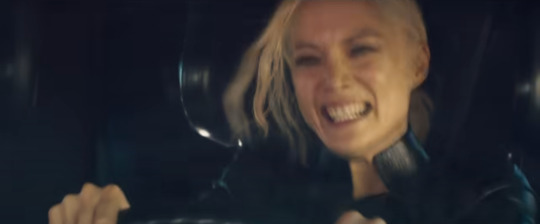
This action sequence is a perfect example of what I mean when I talk about “scenes that let actors act using their faces.” It is a great performance (and I look forward to seeing more of her performances in the future now that Guardians of the Galaxy has put her on everyone’s radar).
Also, in addition to being a globe-trotting adventure about jumping from one locale to another, Mission Impossible movies also include costume changes that are just as drastic, and her character benefits tremendously from this:
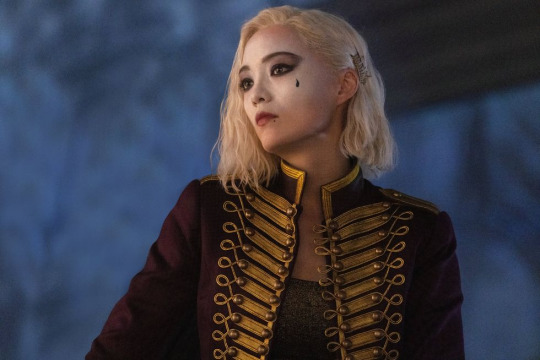
(Seriously, her character is just so cool.)
While the airport sequence is one of the best sequences I’ve seen in a Mission Impossible movie, the Venice sequence is, well, significantly more fraught. In fact, I might rank it lower than any other sequence I can remember from a modern Mission Impossible movie (which I’m going to arbitrarily define as Mission Impossible 4 onward, since that’s when the series hit the point where “basically everyone agrees that all of these movies are pretty great.”)
The Venice sequence, at its weakest points, is weirdly bad. (Which, to be clear, I actually prefer -- things that are weirdly bad will always be preferable to things that are just boringly bad.) There are lots of action movies with bad action that is just creatively bankrupt. But the Venice sequence actually has some great ideas, many of which it actually executes competently -- and then there are some places where the execution just falls short.
For one thing, the start of the Venice “arc” that leads into the action, where characters are just talking to each other, gives a terrible sense of space and absolutely refuses to let more than one character occupy the frame at a time, to the point that I actually found myself wondering, “Did they not have all of the actors on set at the same time when shooting this? Was this entire dialog scene filmed in reshoots?” (I honestly don’t know! It kind of felt like that’s what happened, but it’s not as if this was exactly a tortured production.) I spent that entire dialog sequence completely unaware of where the characters were standing in relation to each other, which really robbed the scene of the kind of tension you’d hope for from a scene where I presume the intended vibe is "a fight could break out at any moment.”
On a more positive note: there was a great shot that really reminded me of this classic fight sequence from Kill Bill:
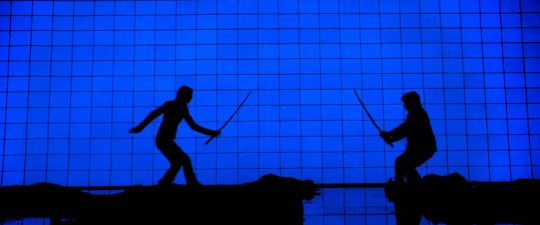
Kill Bill: Vol. 1 (2003)
I’m inclined to believe that the visual similarity seen in the following Mission Impossible 7 shot isn’t accidental:

This shot (which we were shown in the trailer) is great! My biggest complaint is that this particular part of the sequence didn’t last very long, and it had way more cuts than it felt like it needed. Like, I did not need to immediately cut from that shot to this angle:
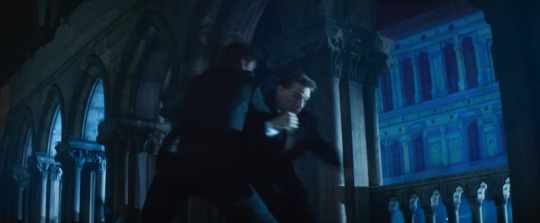
And then immediately to another different angle:
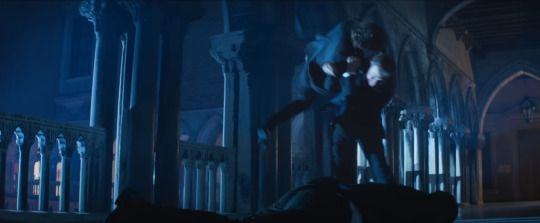
It’s night, and these guys are all wearing suits: not only do all the cuts make it less visually interesting, but it’s hard to keep track of who is where. When we cut to the shot above, I just have to remember that Tom Cruise is the guy who’s doing the throwing (and not getting thrown) based on the continuity of the previous shot, which would not matter if we had simply stayed on that shot!
Back to positive: a thing I will give the Venice sequence credit for is that it was very committed to the idea that when you go to see a Mission Impossible movie, you want to see the characters running. It’s kind of the thing that Tom Cruise is known for.
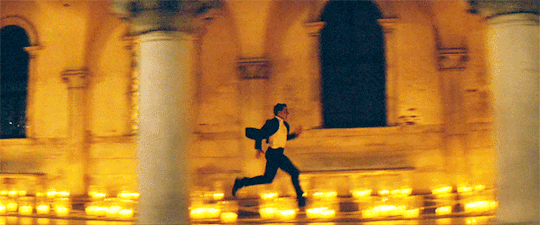
In the Venice sequence, we up the ante by showing other characters running. (You will have to visit the theater to see this, as it’s not shown in the trailer.) And, it feels kind of silly to say it, but I mean this sincerely: when I saw the other characters running, I thought, “Ah, these guys are definitely proper Mission Impossible characters now. I care about them more than I did before this sequence, and I’m definitely going to remember their faces for the rest of the movie.” It works! You can give anyone Main Character Energy by showing them running and putting in the effort to make it look good!
To end with a criticism: by far the most baffling moment of the Venice sequence comes in a fight with two characters on a bridge, which breaks one of the most fundamental principles of film, which is the 180 degree rule.
For those unacquainted with the language of film, the basic idea is that if a shot is framed with Alice on the left side of the frame, and Bob on the right side of the frame, you should preserve that left-right relationship from shot to shot: you shouldn’t then cut to a shot with Bob on the left side of the frame, and Alice on the right.
You can actually maintain this left-right consistency even when doing shot/reverse shot. For example, take this example from Heat. In this shot, we have Al Pacino on the left of the frame, and Robert De Niro on the right:
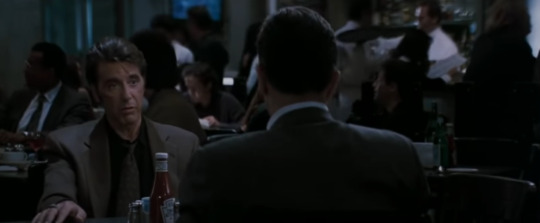
Now we cut to the reverse shot. Notice how, even though we’ve “changed sides” to look at the other actor’s face, Al Pacino is still on the left, and Robert De Niro is still on the right:
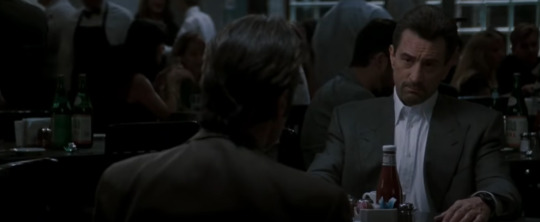
What’s most baffling to me is the context in which Mission Impossible 7 breaks this rule: it happens when we’re watching a fight on a bridge, shot in profile. It’s actually a really neat shot. And then, for seemingly no reason, we cut to another profile shot from the other side of the bridge, so that the character who was on the right of the previous shot is now on the left, side of the frame, and character that was on the left is now on the right. This shot doesn’t seem to show us anything we weren’t seeing before -- we’re still looking at two people in profile as they attempt to stab/punch each other, and there isn’t really anything distinctive in the background, especially since it’s a scene at night. And it flips between these angles multiple times. I was just left wondering, why?
It stuck out like such a sore thumb that I was left wondering if it was in fact some bold artistic choice, and I was wrong for being bothered by it. Were it in the context of some other movie franchise, I might lean towards a more charitable interpretation, but this is supposed to be a big summer action blockbuster for a broad audience: I wouldn’t expect a break in form just for...well, I’m really not sure.
And interestingly, basically every complaint I have about the film is isolated to sequence in Venice, which sort of makes me wonder if this is just a product of different “slices of the film being handled by different creative teams” (2 hours and 43 minutes is a lot of runtime to fill), and that’s why certain parts of the movie are just so consistently better than others. In fact, I did notice after the fact that many of the crew listed in the films credits are specifically labeled “Italy Unit.” (I presume that the “Italy Unit” also worked on the Rome sequence, which was great, but maybe daytime driving sequences involve a different creative skillset than nighttime hand-to-hand sequences.)
Anyway, despite the various flaws in the Venice sequence, I can forgive it a lot, because at least it was trying to do something interesting. I’d much rather have a film make me say “what the heck?” than just sit back in my seat, bored with what is going on. It’s got bad moments, but it’s not terrible, and the bad parts exist in relative isolation in a movie filled with lots of good action set pieces. Mission: Impossible -- Dead Reckoning Part One is like a good 6-part TV miniseries with one weak episode.
I also don’t want to neglect to mention just how funny this movie is. Its humor comes not in the form of wise-cracking dialog like I’d associate with e.g. MCU fare; rather, it does a wonderful job of putting characters into comedic situations. For example, there’s a sequence where two characters attempt to flee while handcuffed to each other, and numerous shenanigans ensue. There were many moments that had me (and the other people in the theater) laughing out loud. While there are many funny moments that I’d love to describe, I wouldn’t want to spoil them. Watch the movie!
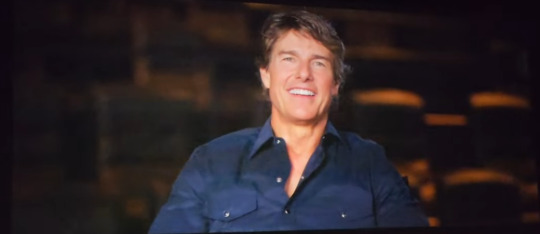
And preferably, you should watch it in a theater, as Tom Cruise told us before the start of the film. This “pre-movie out of character aside” has, without irony, become one of my favorite parts of the theater-going experience: I love it when the actors and/or directors come out to tell me something before (or after) the movie. I loved it when Peter Jackson appeared on the screen to explain why he wanted to make a documentary about World War I, I loved it when John Krasinski welcomed me back to the theater to watch Quiet Place Part II as my first postcovid theatergoing experience, and I loved it when Tom Cruise opened Top Gun: Maverick by thanking the cast and crew and audience who made the magic of movies possible.
I’m fully aware that may just be downstream of the fact that Tom Cruise is an absurdly charismatic person who is good at making me feel a certain way when he talks to the camera. (In fact, I’m pretty sure that’s literally his job description.) But I’m glad that he welcomed me to theater by telling me about how big action movies like Mission Impossible are meant to be seen on the biggest screen possible, surrounded by people who are sharing in the spectacle.
3 notes
·
View notes
Photo
" Solitude gives birth to the original in us, to beauty unfamiliar and perilous - to poetry. But also, it gives birth to the opposite: to the perverse, the illicit, the absurd. "
- Thomas Mann, Death in Venice and Other Tales

2K notes
·
View notes